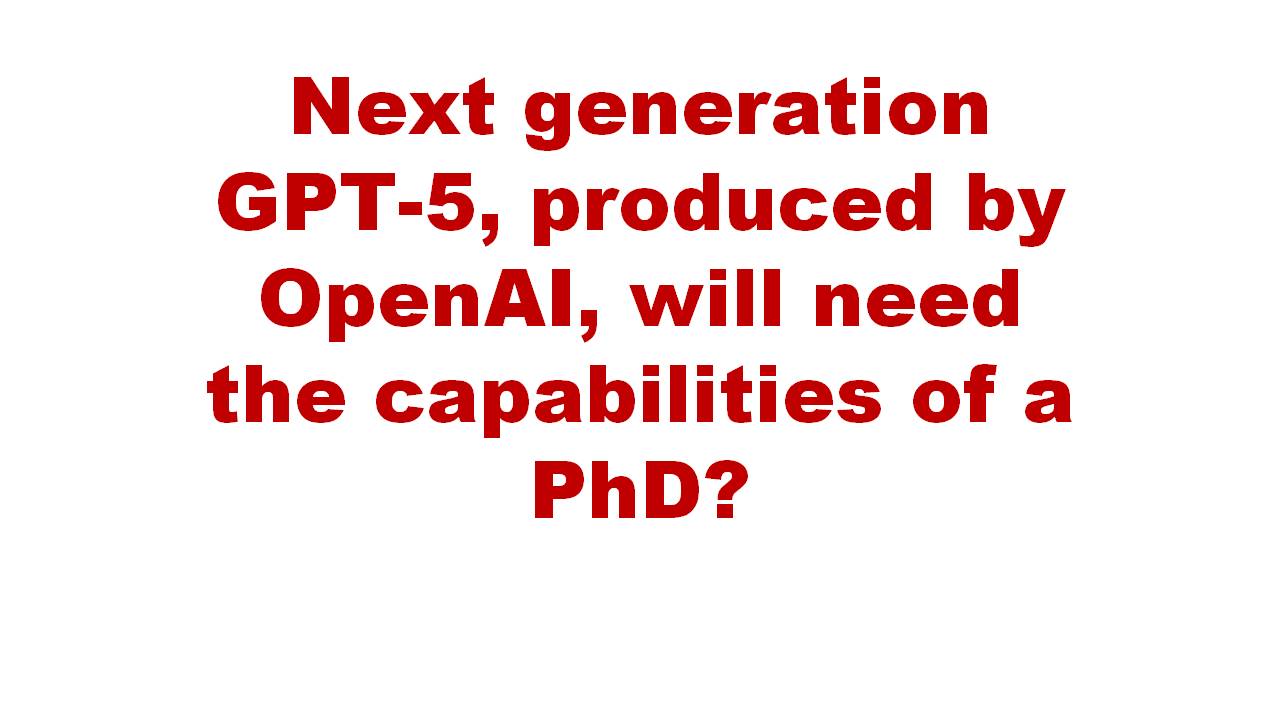by Peter A. Arthur-Smith
“Although GenAI has been surrounded by significant hype, it’s the real, tangible impacts that matter…but exponential transformation will come when we connect human creativity with GenAI to automate end-to-end workflows that can give employees back time to focus on strategic impact.” Lucia Soares, CIO of Technology Transformation Carlyle: Wall Street Journal CIO Network advertisement, November 2024.

The above quote is reinforced by a whole series of Wall Street Journal articles, some headlined as follows:
» Its Exchange article headlined: A Powerful AI Breakthrough Is About to Transform the World, by Christopher Mims, November 16-17, 2024.
» Its Business & Finance article headlined: The Secret to getting Real Value from AI Is…Humans, by Christopher Mims, December 7-8, 2024.
» Its Exchange article headlined: The Next Great Leap In AI Is Behind Schedule and Crazy Expensive, by Deepa Seetharman, December 21-22, 2024
That above last mentioned article concluded that a more advanced and effective reasoning model would be needed to provide the foundations for OpenAI’s Orion and future GPT-5 models. Developers contemplated a combination of older methods and the latest attempted reasoning models. Together their refined results would be fed “along with material generated by people.”
Based upon these articles and other recent viewpoints, one can only draw the conclusion that the AI drum beat so far has been the prospect of replacing humans in a big way with GPT-5 technology. That has justified the huge tech industry investment in AI so far, fanned by the Wall Street hype, to pursue a potential pipedream of a minimal people workplace. What happens to the displaced people is anyone’s guess, but the profit windfall from such displacement is mouth watering enough to justify this enormous investment.
There’s no doubt that a number of AI innovations have produced worthy administrative and manufacturing efficiencies. Such streamlining has made the investment worthwhile so far. AI hasn’t been required to think or reason beyond fairly basic levels and has replaced a number of less attractive human routines; such as financial and management reporting, inspection-quality control, production activities, material sourcing, delivery systems, customer service, and so forth. In other words, it has created the prospect of eliminating blue-collar and frontline administrative staff.
But the AI cohort now desires replacing white-collar and more skilled specialist resources, where the ability to think or reason will be much more critical. The above quoted articles suggest that the tech industry has hit a wall…too bad for Wall Street! Despite whispers of a breakthrough, the continued enormous investment to find one that won’t involve people looms. To enable AI to reason is now the primary challenge.
In other words, to make AI more effective, it will likely need to partner with humans to assist with fresh ideas, elucidate compelling visions and associated strategies, and be more resourceful. It will also be required to make work environments more conducive and enjoyable, and allow for greater engagement and productivity. Additionally, it will be expected to identify and make breakthroughs at a faster rate and produce more elegant rather than cost-efficient (often cheap) solutions.
As one article put it; since the release of GPT-4 in March 2023, when the system acted like a smart high-schooler, OpenAI has been working on delivering GPT-5 which would need the capabilities of a PhD. That effort has reportedly stalled because GPT-5’s reasoning capability still hasn’t been resolved. No doubt OpenAI has to find a more effective option to make such a reasoning breakthrough. Maybe option solving could provide a different avenue of attack?…read contribution by Reid Hoffman, Co-Founder of LinkedIn below:
Reid Hoffman-Co-Founder – LinkedIn Contribution -01.10.25
Response to Bloomberg Article –AI Could Kill 200K Wall Street Jobs
As AI drives massive productivity gains, businesses may consider cutting back on their human workforce to boost efficiency—but I don’t believe that’s the right choice. The real promise of AI isn’t in replacing humans—it’s in amplifying their potential.
For centuries, humanity’s greatest leaps forward were not achieved by replacing humans completely with new tools we’ve built but instead by using the tools to accelerate human agency and potential. The automobile amplified human movement. The computer amplified human creation. And today, AI is amplifying human intelligence.
There are certain jobs—especially those involving repetitive, robot-like tasks—that AI will transform. After all, robots will always be better robots than humans. But humans thrive when they’re empowered to be better humans. With AI, people will unlock new skills and deepen natural talents –– achieving what I call “superagency.”
Ultimately, the surge in productivity will guide business leaders to a realization: the right move isn’t to do the same work with fewer people but to create even greater value by leveraging more employees with new AI-driven superpowers.
Our goal should be clear. Build technology that works with us, not for us—tools that extend what it means to be human, not replace it. Because when we amplify human ingenuity, the possibilities are infinite.
